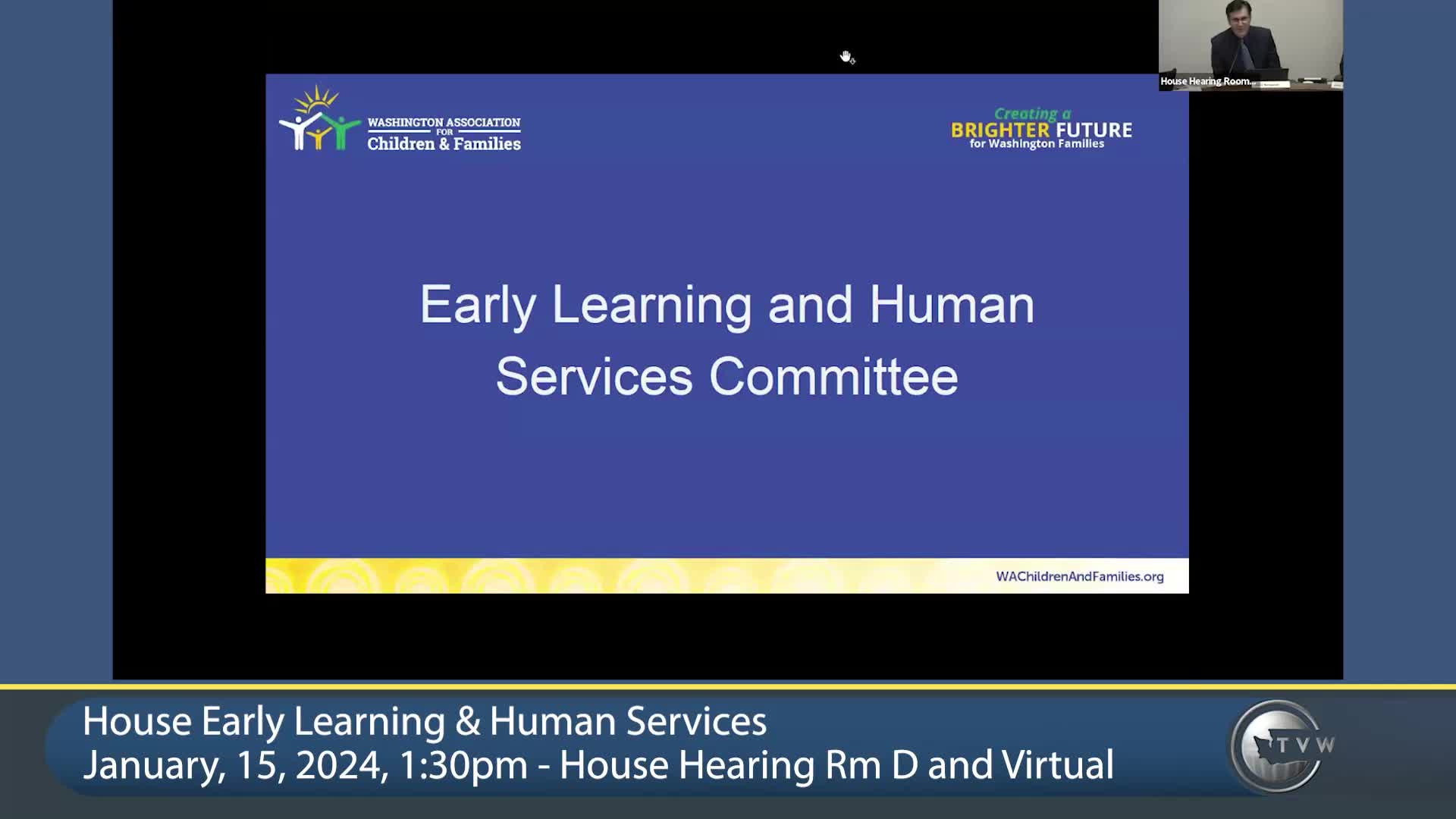Providers warn of liability‑insurance crisis and rate shortfalls for foster‑care services
January 15, 2025 | Human Services, Youth, & Early Learning, House of Representatives, Legislative Sessions, Washington
This article was created by AI summarizing key points discussed. AI makes mistakes, so for full details and context, please refer to the video of the full meeting. Please report any errors so we can fix them. Report an error »

Jill May, executive director of the Washington Association for Children and Families, told the committee that provider agencies face an urgent mix of rising insurance costs and reimbursement rates that do not cover actual expenses.
May said agencies are reimbursed at levels that fall well short of current costs. She gave two examples: a health‑insurance reimbursement rate of roughly $42,100 per person versus an average actual cost of about $88,100, and liability insurance costs that now average around $66,000 annually. May said many child‑placing agencies are small — most employ far fewer than 100 people — and cannot absorb those costs.
The association described a national market change: a single insurer in California that had covered many child‑placing agencies withdrew coverage for about 75% of those agencies, and May said the same insurer also writes policies in Washington. May said the number of insurers willing to cover child‑placing agencies has dropped; she estimated as few as three willing insurers remain.
Because insurers are offering limits that sometimes do not meet state required amounts, May said some agencies have been given grace periods to find new coverage and face potential closure if they cannot secure replacement policies. The association said increased claim frequency and higher payouts related to abuse claims are driving rate increases and shrinking market capacity. May asked the committee to note that liability insurance availability, not only reimbursement rates, is a critical constraint for the system.
May described WACF’s training institute for member agencies, provider priorities (independent living rate stability; family preservation rate stability) and the association’s advocacy work with DCYF and the Office of the Insurance Commissioner.
Why it matters: Private agencies license foster homes, deliver in‑home and group services, and handle many operational responsibilities for child welfare. A failure of the provider market would reduce available placements and supports for families and children.
May said agencies are reimbursed at levels that fall well short of current costs. She gave two examples: a health‑insurance reimbursement rate of roughly $42,100 per person versus an average actual cost of about $88,100, and liability insurance costs that now average around $66,000 annually. May said many child‑placing agencies are small — most employ far fewer than 100 people — and cannot absorb those costs.
The association described a national market change: a single insurer in California that had covered many child‑placing agencies withdrew coverage for about 75% of those agencies, and May said the same insurer also writes policies in Washington. May said the number of insurers willing to cover child‑placing agencies has dropped; she estimated as few as three willing insurers remain.
Because insurers are offering limits that sometimes do not meet state required amounts, May said some agencies have been given grace periods to find new coverage and face potential closure if they cannot secure replacement policies. The association said increased claim frequency and higher payouts related to abuse claims are driving rate increases and shrinking market capacity. May asked the committee to note that liability insurance availability, not only reimbursement rates, is a critical constraint for the system.
May described WACF’s training institute for member agencies, provider priorities (independent living rate stability; family preservation rate stability) and the association’s advocacy work with DCYF and the Office of the Insurance Commissioner.
Why it matters: Private agencies license foster homes, deliver in‑home and group services, and handle many operational responsibilities for child welfare. A failure of the provider market would reduce available placements and supports for families and children.
View full meeting
This article is based on a recent meeting—watch the full video and explore the complete transcript for deeper insights into the discussion.
View full meeting
